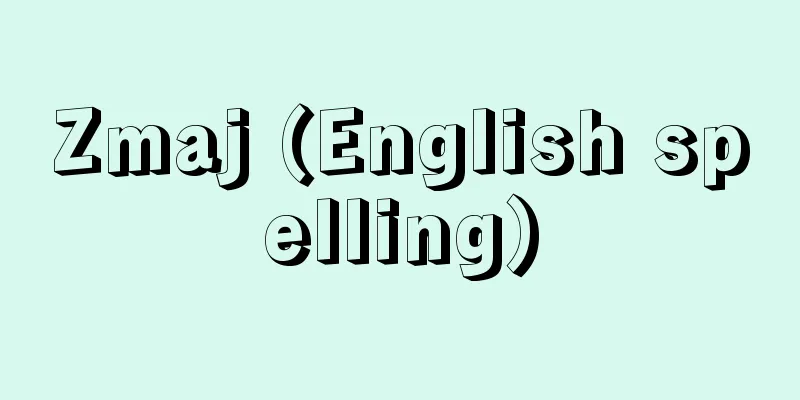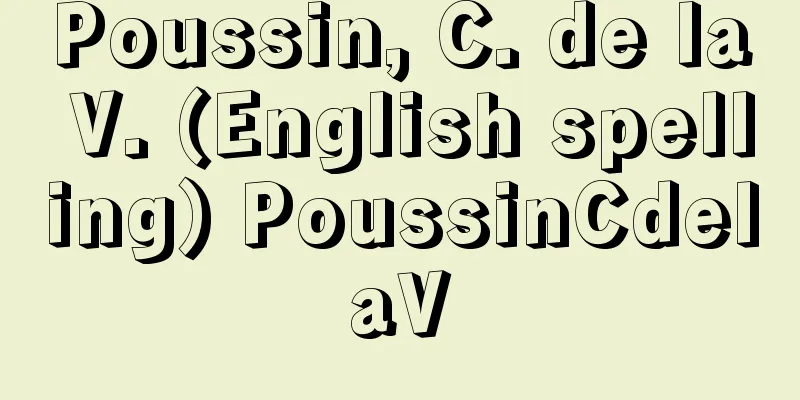Space velocity

|
The minimum speed that a rocket or other flying object must have on the Earth's surface before its trajectory changes. There are three types: first, second, and third cosmic velocities. Cosmic velocities for celestial bodies other than the Earth can also be considered. If the speed of an object launched horizontally from the top of a mountain is gradually increased, the point at which the object falls to the Earth's surface becomes increasingly far away, and eventually the object does not fall to the Earth's surface but instead traces a circular orbit along the Earth's surface. The initial speed V 1 at this time is called the first cosmic velocity, circular orbital velocity, or circular velocity, and is the minimum launch speed required to become an artificial satellite of the Earth. If the mass of the Earth is m , the radius is r , the gravitational constant is G , and the gravitational acceleration at the Earth's surface is g , then . If the initial speed increases further, the satellite orbit becomes elliptical, and as the initial speed increases, the apogee moves away, and finally the object traces a parabolic orbit with the apogee at infinity, and the flying object escapes from the Earth's gravitational sphere. The initial speed V 2 at this time is called the second cosmic velocity, escape velocity, or parabolic velocity, and its magnitude is . If the initial speed of a flying object exceeds V2 , it will escape the gravitational sphere of the Earth in a hyperbolic orbit, but within the gravitational sphere of the Sun, it will become an artificial planet that follows an elliptical orbit around the Sun, just like the Earth. Sounding rockets launched towards other planets are like this. If the initial speed increases further, the flying object will escape the gravitational sphere of the Sun as well and fly off into space. The initial speed V3 at this time is called the third cosmic velocity or solar system escape velocity, and V3 = 16.7 km/s. The above are the cosmic velocities on the Earth's surface, but the cosmic velocities U1 and U2 at high altitudes at an altitude h above the Earth's surface are smaller than the values on the Earth's surface, and if the radius of the Earth is r , then It is U 1 < V 1 , U 2 < V 2 , but since it takes energy to raise the rocket from the surface of the Earth to an altitude of h , the initial velocity on the surface of the Earth is actually greater. Also, when the Earth's rotation is taken into account, if the launch is in the direction of rotation, the rotational speed (0.45 km/s at the equator) is added to the initial velocity, and if the launch is in the opposite direction, it is subtracted from the initial velocity, so the cosmic velocity differs depending on the direction of launch. The third cosmic velocity, which is the escape velocity from the solar system on the Earth's orbit, takes into account the Earth's orbital speed. If the mass of the Sun is M and the radius of the orbit is R , the orbital speed is and the escape velocity from the solar system is , but if the orbital speed is used, the required escape velocity at the exit of the Earth's gravitational sphere is (42.1 - 29.8) km/s = 12.3 km/s. The minimum launch velocity on the surface of the Earth required to leave this speed at the exit of the gravitational sphere is the value of V 3 mentioned above. Source: Encyclopaedia Britannica Concise Encyclopedia About Encyclopaedia Britannica Concise Encyclopedia Information |
|
ロケットなどの高速で飛ぶ飛行体の運動軌道が変わる限界速度として,地球表面で与えなければならない最小速度。第一,第二,第三宇宙速度の 3種類があり,また地球以外の天体に関する宇宙速度も考えられる。山頂から水平に発射される物体の速度をしだいに増していくと,地表への落下点がしだいに遠くなり,ついに物体は地表に落下しないで地球表面に沿って円軌道を描く。このときの初速 V1を第一宇宙速度,円軌道速度または円速度といい,地球の人工衛星となるための最小の発射速度である。地球の質量 m ,半径 r ,万有引力定数 G ,地表での重力加速度 g を用いると, である。初速がさらに増すと衛星軌道は楕円になり,初速の増大とともに遠地点が遠ざかって,ついに遠地点を無限遠にもつ放物線軌道を描くようになり,飛行体は地球の引力圏外に脱出する。このときの初速 V2を第二宇宙速度,脱出速度,または放物線速度といい,その大きさは である。初速が V2をこえた飛行体は,地球に対しては双曲線軌道を描いてその引力圏を脱するが,太陽の引力圏内では地球と同様に太陽に関して楕円軌道を描く人工惑星となる。他の惑星に向かって打ち出される探査ロケットはこのようなものである。初速がさらに増大すると飛行体は太陽の引力圏をも脱して宇宙空間へ飛び去る。このときの初速 V3を第三宇宙速度または太陽系脱出速度といい,V3=16.7km/s である。以上は地表における宇宙速度であるが,地表からの高度 h の高空での宇宙速度 U1,U2は地表での値より小さく,地球の半径を r とすると となる。 U1<V1,U2<V2 であるが,地表から高度 h の点までロケットを上げるのにエネルギーを要するから,地表での初速はかえって大きくなる。また地球の自転を考慮すると,発射が自転の向きならば,自転による回転速度(赤道で 0.45km/s)が初速に加わり,逆向きならば初速から差し引かれるので,宇宙速度は発射の向きによって違う。地球の公転軌道上における太陽系からの脱出速度である第三宇宙速度については,地球の公転速度が考慮される。太陽の質量を M ,公転軌道の半径を R とすれば,公転速度は ,太陽系からの脱出速度は であるが,公転速度を利用すれば,必要な脱出速度は地球の引力圏の出口で (42.1-29.8)km/s=12.3km/s となる。この速度を引力圏の出口で残すために必要な,地表での最小の発射速度が前述の V3の値である。 出典 ブリタニカ国際大百科事典 小項目事典ブリタニカ国際大百科事典 小項目事典について 情報 |
>>: Space geodesy (English spelling)
Recommend
Parapet - Railing
A piece of material placed vertically and horizon...
Mérida (English spelling)
The capital of the state of Mérida in northwestern...
Kitayamazaki
This is one of the scenic spots in Sanriku Fukko ...
Poor harvest - kyousaku
This refers to a severe crop failure, including g...
ta meta ta physika (English spelling) tametataphysika
...And under this ontology, physis, which once me...
Atobe Kaiou - Atobe Kaiou
...A man of the mid-Edo period. A samurai with a ...
Hitoshi Ono
… The changes in individual cities or cities belo...
Ikuchi-so
...The administrative area of Setoda Town inclu...
Entoku
The Japanese era name (nengo). It was the era name...
Discussion of the Association of Feudal Lords - Reppan Kaigiron
A political theory that emerged in the final stage...
Praia de Ipanema (English spelling)
… [sightseeing] Rio de Janeiro has become a world...
Takashina Takako
Year of death: 2.10 (996) Year of birth: Unknown. ...
Pseudocidae - Ant Beetles
...A general term for insects belonging to the fa...
sexual harassment
...Generally it refers to committing adultery wit...
Chebyshev, Pafnutii L'vovich
Born: May 16, 1821, Okatobo Died: December 8, 1894...









